Sara-la-Kali – The path of the soul
Saint Sara the black, heart studded with stars
she spreads her cloak over her throbbing breasts.
The rough-mouthed dawn makes the path thorny
under the concrete bridge, where a death of flames
hungry for young flesh, she was satisfied.
She bent down, Saint Sara the black, picked up the silences of frogs
and blue bluebells of spring
of heartbreaking screams: a bundle, she brought Gipsy children,
she squeezed her dark breast: all that was left
of those who burned in the hut of twigs and reeds
in the garbage next to the murmuring river.
Her name is Sara, like in the Old Testament, maybe a Hebrew name referring to a woman of high society, which is sometimes translated as “princess” or “lady”. The legends identify her as the servant of one of the three women named Mary who were present during the crucifixion of Jesus. Other stories tell that she was the daughter of Jesus and Mary Magdalene, further that she was Mary Magdalen’s slave.
The place of worship is the city of Saintes-Marie-De-La-Mer, in France, where she would have come with Mary Jacobin, sister of Mary, Jesus’ mother; Maria Salome, mother of the Apostles James and John; Mary Magdalene, Martha and Lazarus. Thrown into the sea to escape from Palestine, on a boat without oars, Sara would have promised that if they had arrived safely everywhere, she would have spent the rest of her days with her head covered by a scarf; they were rescued by a group of gipsies on the coasts of Provence.
It is also probable that the cult of Sara la Nera can be linked to that of the Indian deity Kalì. Thus both the hypothesis of the Indian origin of the Roma Community, which arrived in France around the 9th century, and the rite of immersing the statues in the water agree.
Sara the Black is the Saint of the desperate, the offended and the needy. The two Maries became the patron saints of the town, and their statues are kept inside the church, and carried in procession on the anniversary of the day of the landing, while Sara, known as the Black, became the patroness of travellers and gipsies.
During the days of the festival in honour of Sara, the small town of Saintes-Marie-de-la-Mer is invaded by caravans of cheering Roma, some in modern campers and others in old wooden ones. On Santa Sara’s day, the celebrations inside the church take place for the whole day. The representatives of the “guardians”, the landowners who seasonally employed the Roma as herdsmen, station themselves in the square of the Basilica on the saddle of their thirteen white horses. In the basilica, songs and prayers alternate, punctuated by the shouts “Vive Les Saintes Maries”, “Vive Santa Sara”.
The procession advances, punctuated by songs and intonations, along the village streets and up to the beach, where a crowd of thousands of participants has gathered again this year. The excitement rises to the max, the fever of faith inflames souls and, pushed by frightened horses and jostled by the faithful, it is not uncommon to see people falling into the sea and being trampled by colts.
The ceremony ends with a collective bath that takes on the appearance of a real purification rite, the Mediterranean twins with the Ganges in an unmissable show of colours, so Kalì returns to the church, escorted by the sound of the guitars, the singing of the invocations, and the litanies.
The breeze blows warm, and the dry sand tingles on the skin, the acrid smell of the horses mixes with the incense, and everything becomes mystical. The sky is frescoed in soft pink, and the bells approach almost without recollection of having taken steps. I’m dripping, barefoot, enraptured by the moment. The eyes of the devotees are red, mixed with gravel and tears. With their arms raised, they shout Sara’s name once again and thank her for the Mercy.















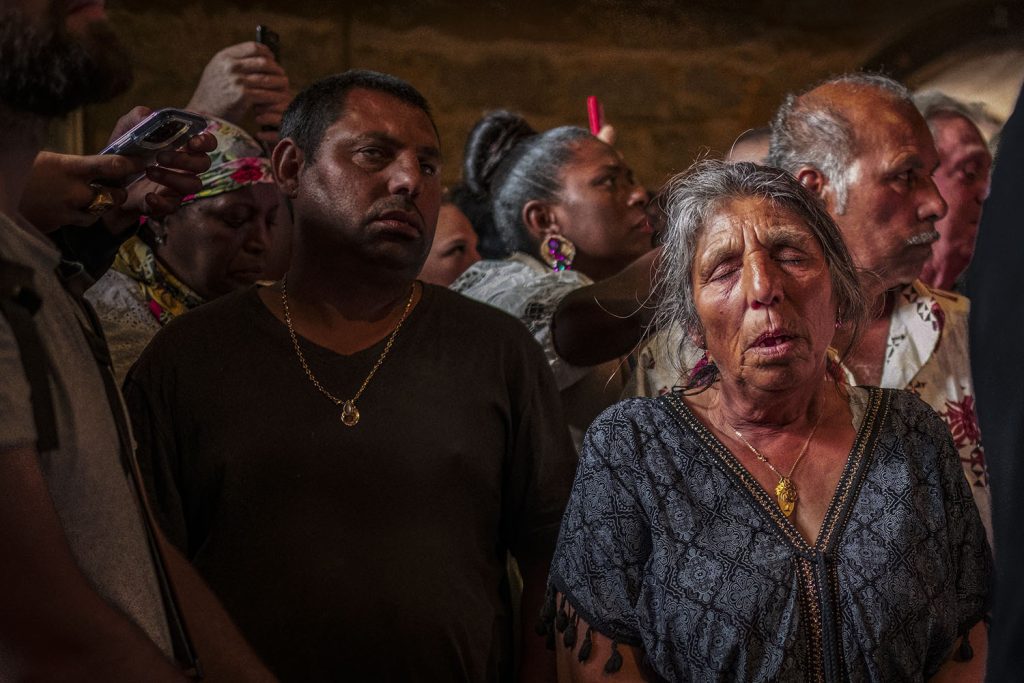




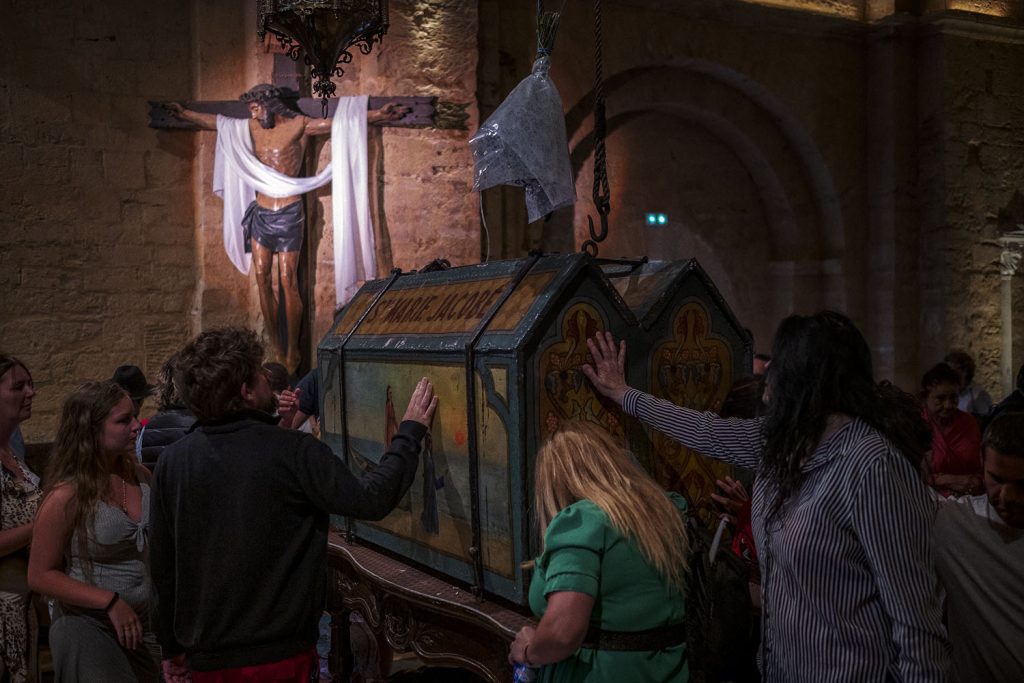


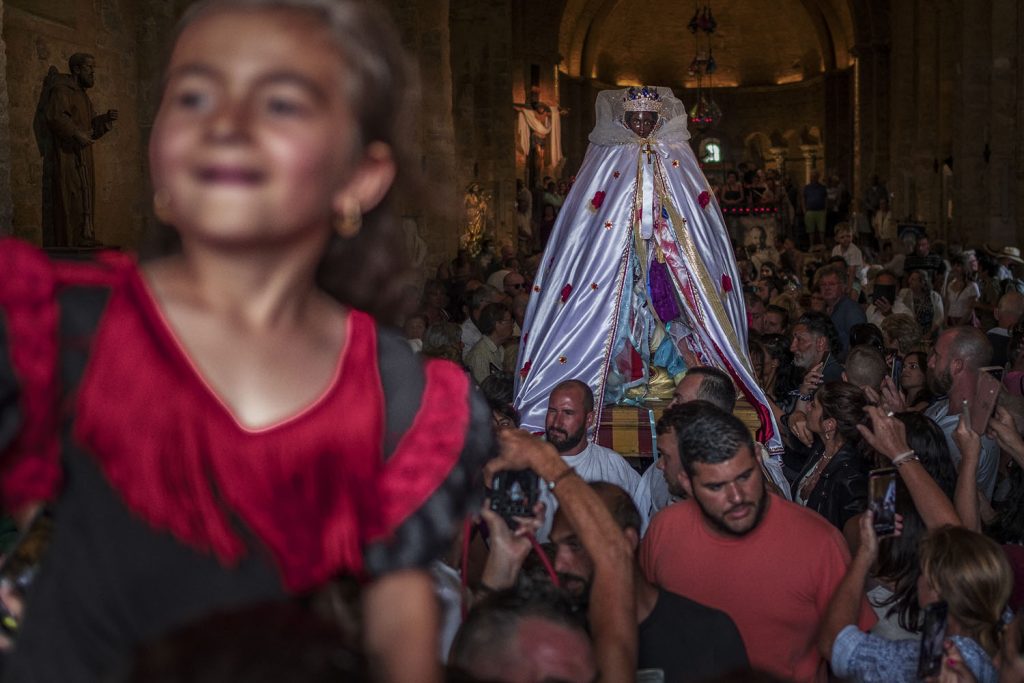





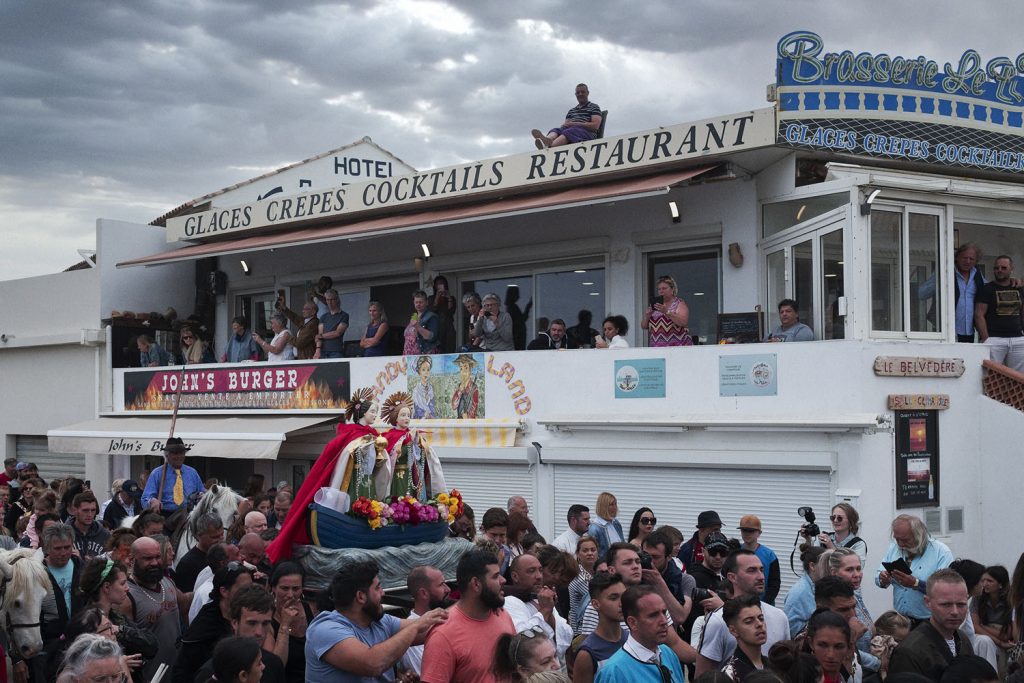


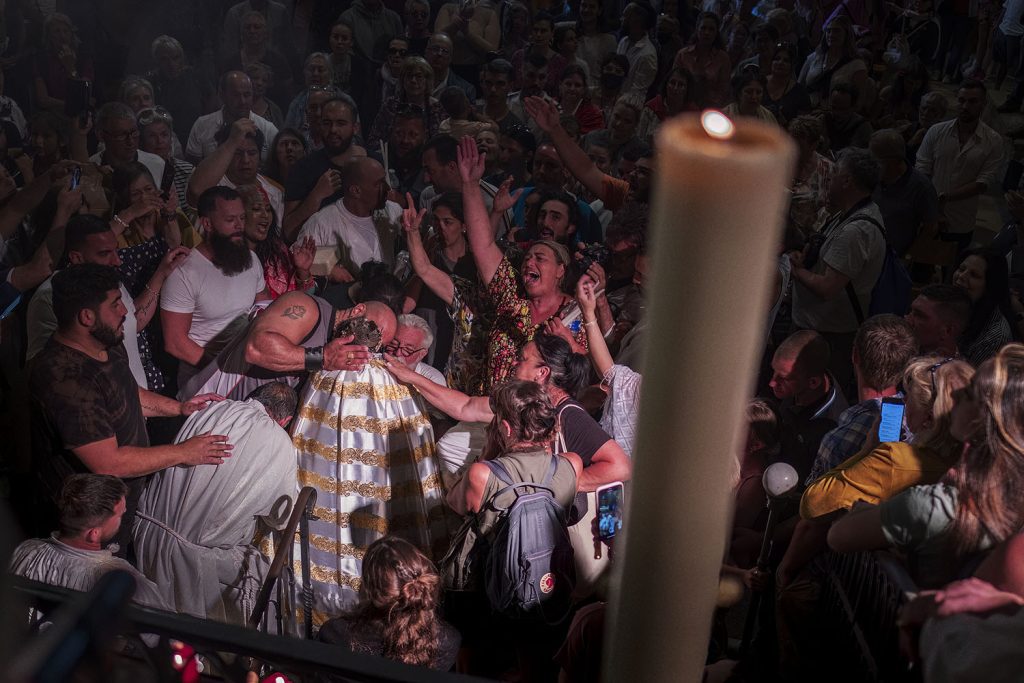




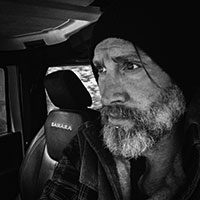
“My name’s Elvio Maccheroni, and I live in a lodge inside the Natural Park of Mount Subasio in central Italy. Photography has always been my passion, and now it has become a job; including National Geographic among my collaborations. My photographic style prefers reportage, and for this reason, I love to travel and always look for new situations in which to infiltrate. My Fuji kit allows me to go unnoticed and thus maintain the naturalness of the moment.”




